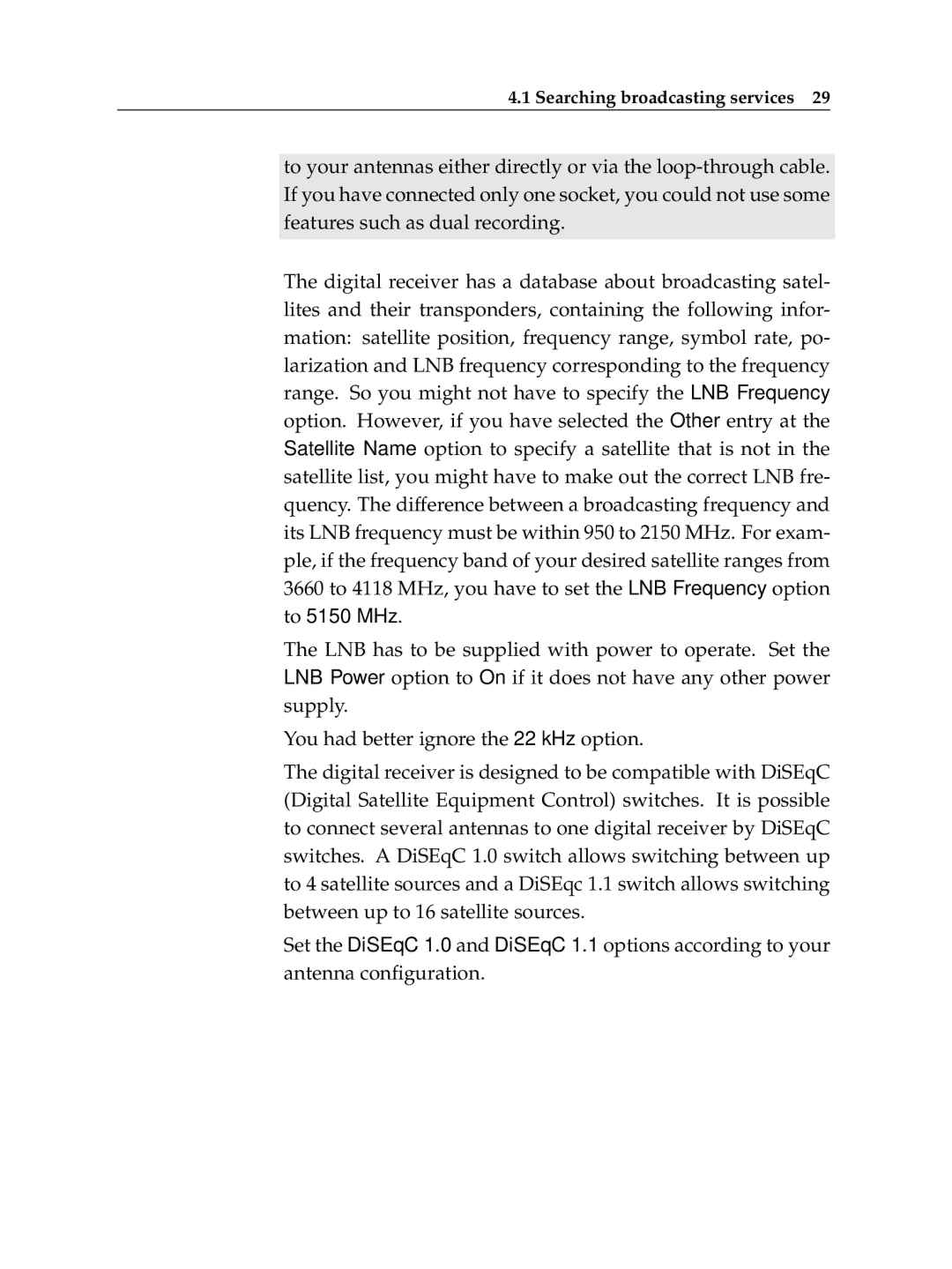
4.1 Searching broadcasting services 29
to your antennas either directly or via the
The digital receiver has a database about broadcasting satel- lites and their transponders, containing the following infor- mation: satellite position, frequency range, symbol rate, po- larization and LNB frequency corresponding to the frequency range. So you might not have to specify the LNB Frequency option. However, if you have selected the Other entry at the Satellite Name option to specify a satellite that is not in the satellite list, you might have to make out the correct LNB fre- quency. The difference between a broadcasting frequency and its LNB frequency must be within 950 to 2150 MHz. For exam- ple, if the frequency band of your desired satellite ranges from 3660 to 4118 MHz, you have to set the LNB Frequency option to 5150 MHz.
The LNB has to be supplied with power to operate. Set the LNB Power option to On if it does not have any other power supply.
You had better ignore the 22 kHz option.
The digital receiver is designed to be compatible with DiSEqC (Digital Satellite Equipment Control) switches. It is possible to connect several antennas to one digital receiver by DiSEqC switches. A DiSEqC 1.0 switch allows switching between up to 4 satellite sources and a DiSEqc 1.1 switch allows switching between up to 16 satellite sources.
Set the DiSEqC 1.0 and DiSEqC 1.1 options according to your antenna configuration.
